Throughout England, ever more people are taking to the sea — and lakes, reservoirs, and rivers, too. Open-water swimming is increasingly popular, even in the country’s chilliest seas and in the cold days of winter. There are plenty of health benefits to swimming in cold water, but the pluses extend also to the fun of discovering a new location in a very different way. England is full of lovely, serene, and challenging places to propel yourself through the open water. Here’s what you need to know and where to go.
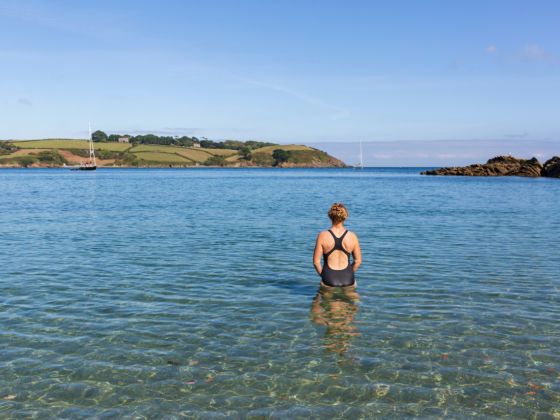

Wild Swimming Shows Off England’s Beauty, and It’s Good for You
Swimming outdoors, even in winter
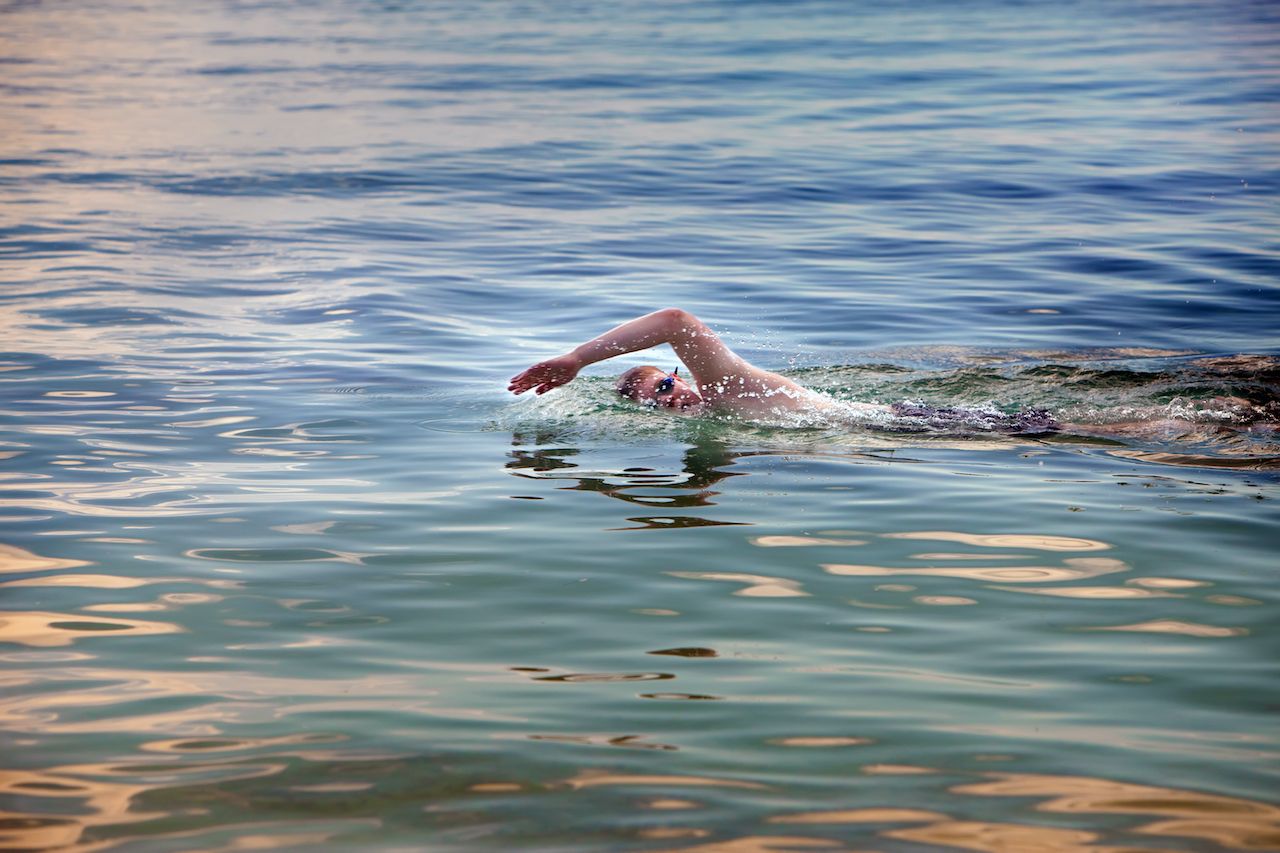
Photo: KKulikov/Shutterstock
According to Swim England, outdoor swimming had about 7.5 million participants in England in 2019. Of those, over two million people preferred open water, including lakes, rivers, and the Atlantic Ocean. Many of them are also taking those strokes in the icy waters of mid-winter. After all, swimming is one of the few sports that you can do by yourself. From seasoned swimmers to beginners, as long as you know how to swim, you can go for it.
As for the cold part, it’s a personal challenge for the mind more than the body. As long as you can access a body of water, it’s up to your mental strength to take those few, chilly steps into it. Just don’t spend too long in too-cold water. Those questioning their decision to swim around a frigid lake they can’t see the bottom of are often inspired by the known health benefits of swimming in cold water — which speeds up your fat-burning metabolism, increases oxygen optimization, and improves your circulation. Studies also show exposure to cold water strengthens your immune system and may even be good for your libido.
Socializing and a sense of shared experience is another big component to the growing movement. Nobody understands how it feels to swim in chilly water except for those who’ve had as many goosebumps in 50-degree Fahrenheit (10-degree Celsius) water. With them, you plan day trips or vacations considering possible lakes, rivers, or anywhere else you can jump in for a swim.
Staying safe in open, and cold, water

Photo: Jacob Lund/Shutterstock
Besides common-sense steps such as not swimming alone and not wandering far from shore, every place is different — so gather as much knowledge as possible about the location. Find information from the swimming national governing body, Swim England, or from established online sources such as the Outdoor Swimming Society and Wild Swimming. Contact local swimming groups or information centers.
Slack tide, one hour before and after high or low tide, is usually a safe time to swim as the water is unstressed by movement. Other factors to consider include whether or not there are strong currents and what the total depth is. Look into if there have been blue-green algae blooms; these can be very toxic, strong enough to kill dogs and send people to the hospital. Find out if there is other algae or reeds. While reeds are usually just annoying, they can potentially be dangerous if thick since you can get entangled. Likewise, pike fish might hide in them, and you want to avoid an encounter with a large school of pike.
Getting outfitted and into the water
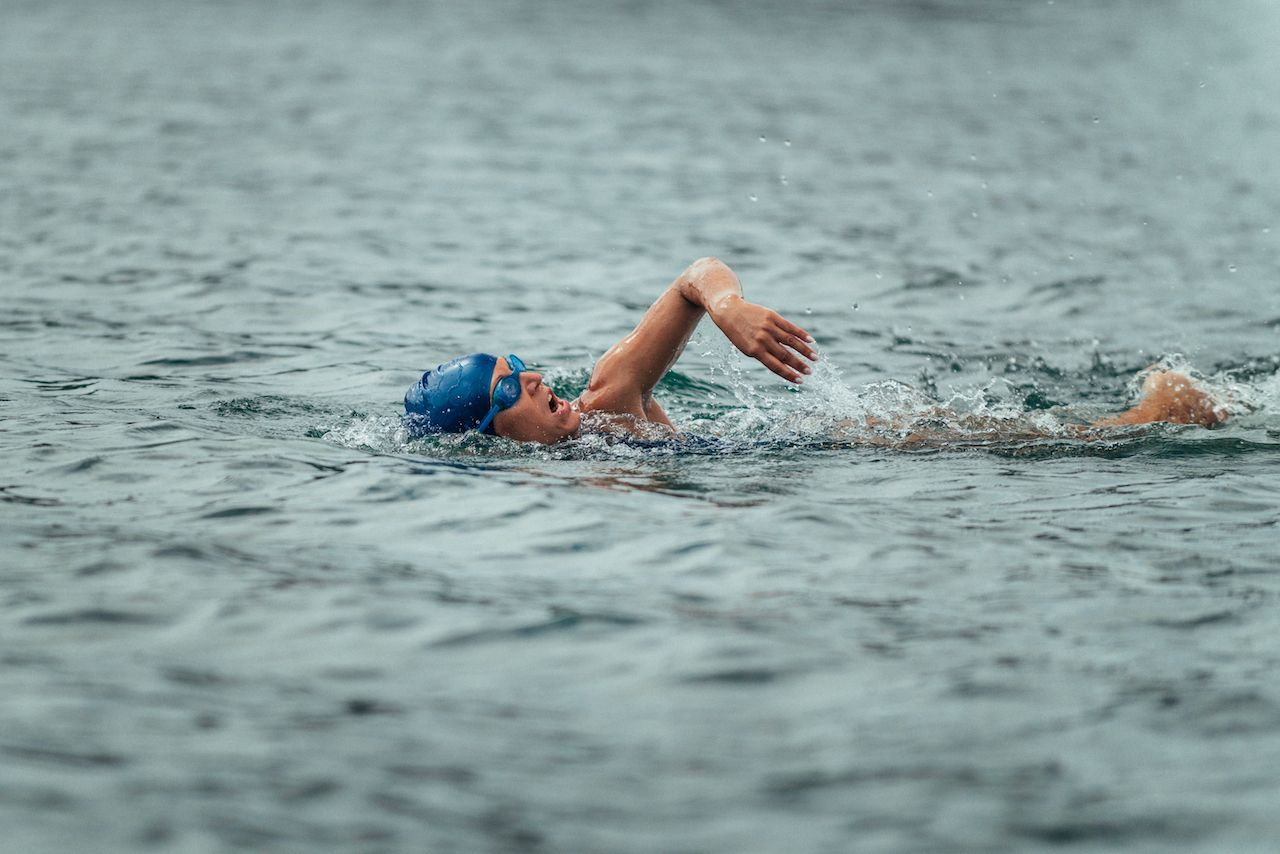
Photo: Microgen/Shutterstock
The basics are goggles and a swimsuit. Don’t bother too much with anti-glare goggles unless you plan on swimming often in sunlight. Tinged lenses are more a personal choice; a clear view is preferred. If you aren’t a seasoned swimmer, get a wetsuit. Sleeveless ones give more freedom of movement, but they do leave the arms exposed to the cold.
Neoprene caps are very useful, as keeping your head warm is key for avoiding headaches and unnecessary heat loss. Make sure you get a comfortable one; don’t feel constricted by the chin-strap. Swimming socks and gloves are mainly for insulation. They may look dorky, but they come in handy when walking on pebble shores while the waves throw rocks at your cold feet. Seasoned cold water swimmers might wear these and a neoprene cap but no wetsuit.
When it comes time to enter the water, if you aren’t a seasoned swimmer, make your way in as you feel comfortable; don’t just jump in. Tread water close to shore and keep moving. Prepare to swim along the shoreline. Get out before the target time and warm up. Then go back in if you feel like it. Repeat as comfortable.
Many people feel uneasy about not seeing the bottom of the body of water, which is the common water condition in England in colder months. Currents kick up mud, silt, and vegetation. A simple solution might just begin by doing the breaststroke with your head above the water.
Where to go
It’s good to know where unique open water spots are. Since the Wild Swim website map shows quite a few of them, here are some suggestions.
Brighton, East Sussex
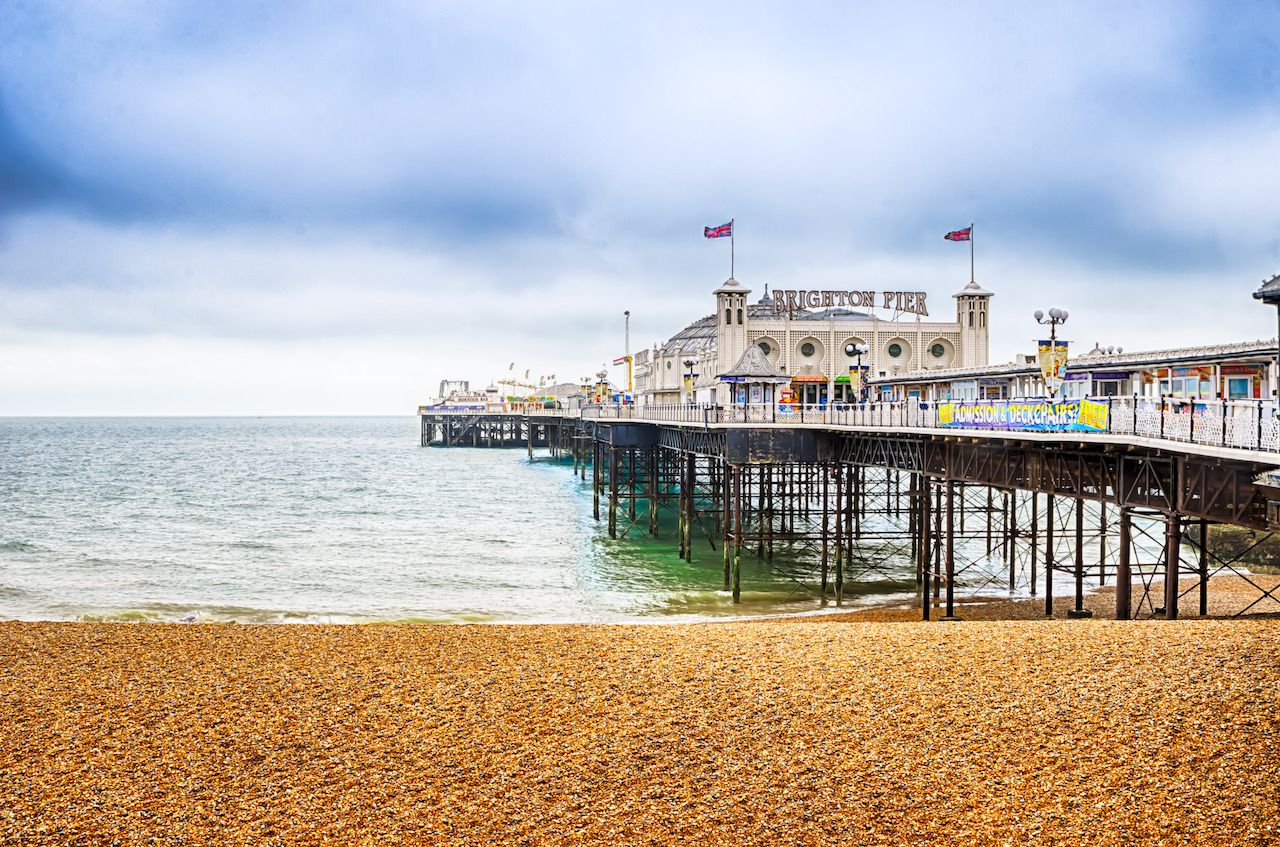
Photo: Steve Buckley/Shutterstock
Swim along the east side of the Brighton Pier, a cast-iron and timber Victorian structure. Unless there’s a storm, people swim along the iconic pie’s length every morning throughout the year. The pier juts out more than 1,700 feet into the sea and stands tall even over the highest tides. This stretch of pebble beach is long, wide, perfectly clean, and uninterrupted. Round rocks in shades of chocolate brown, hazelnut, and slate grey cause a recognizable and constant “thudding” sound when tumbled by the crashing waves. I find the rocks’ sound pleasant; I find the rocks themselves less so when they hit my feet while I’m walking in or out of the water.
The waves at the shoreline are always pretty sizable, so the transition into or outside the water needs to happen fairly quickly. Once you’re in and behind the shore break, the view of the pier above your head is an impressive contrast between the amusement park’s bright white buildings, colored flags, and the pier’s rust-colored pillars. The salty water isn’t usually clear, but on the days that does happen (usually in summer), we head to the submerged wreck halfway out. You can also choose to swim under the pier, as the sunlight above makes for mesmerizing light-and-shadow displays with the thick rows of iron pillars.
Loughrigg Tarn, Lake District, Cumbria
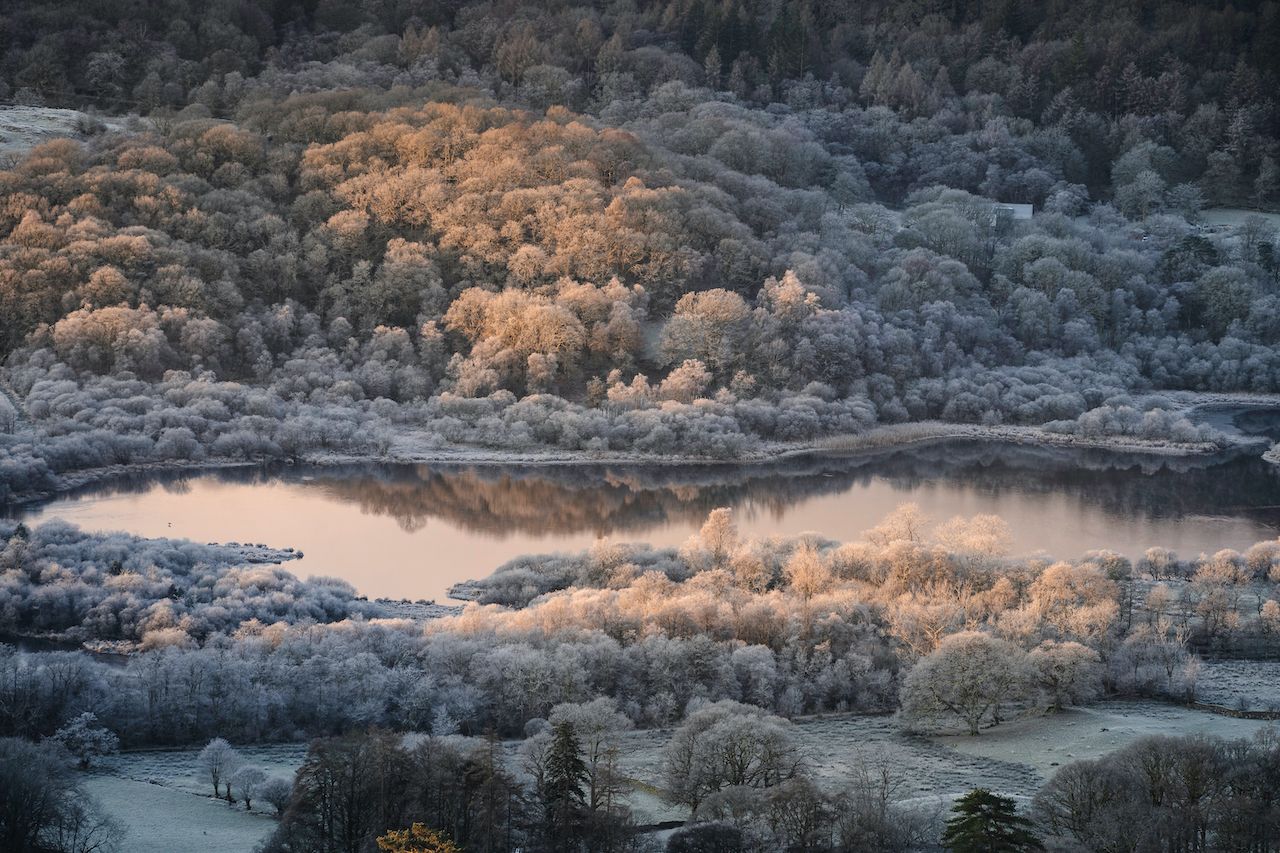
Photo: Mike Taylor/Shutterstock
William Wordsworth himself praised this mountain lake as “round, clear and bright as heaven.” Hidden at the bottom of a valley and surrounded by trees, the lake is easy to miss and a bit messy to reach from the muddy footpath and shores. The water is clean but murky. You’ll definitely need to wash everything once home. As the lake is small the water is on the fresher side. In order to avoid other people, or cows, and have the lake for yourself, I suggest arriving early in the morning, with the added perk of it also being silent — the water is flat with little movement. You will likely have ducks accompanying you, so be sure not to swallow the water. The lake’s margins are thick with aquatic plants and shrubs. Looking northwest, you’ll take in the splendid backdrop of the Langdale Pikes, with the emerald and shamrock hues of the rolling hills covered by patches of woodland. On a clear morning, you’ll savor the sky’s changing colors as the rising sunlight from the southeast starts shining on the Pikes’ slopes.
Black Moss Pot, Langstrath, Lake District, Cumbria
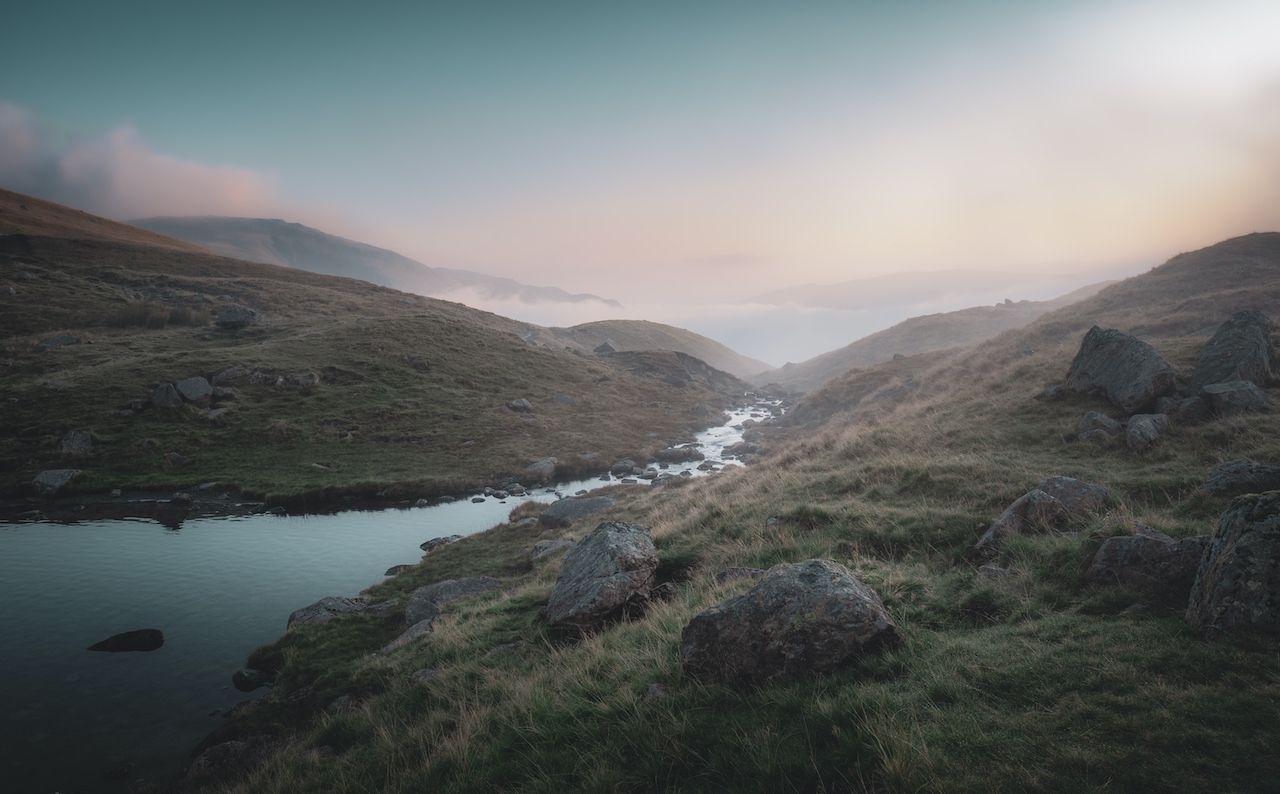
Photo: Jez Campbell/Shutterstock
Langstrath Beck (beck is Danish archaic for stream) is a three-mile hike from the road in a desolated area. Green grass blankets the valley and the surrounding hills. Under the sunshine, the grass brightens up to a sparkle if there is dew or rainfall left. The stream, at the bottom of the valley, suddenly falls into a ravine. The short waterfall creates a pool enclosed by vertical grey rock walls. The water is cold and clear. The underwater view is unusual as there are no fishes nor vegetation. There isn’t much current, allowing for true undisturbed immersion (literally) in nature as, unsurprisingly, the place is very quiet.
River Dart, Staverton, Devon
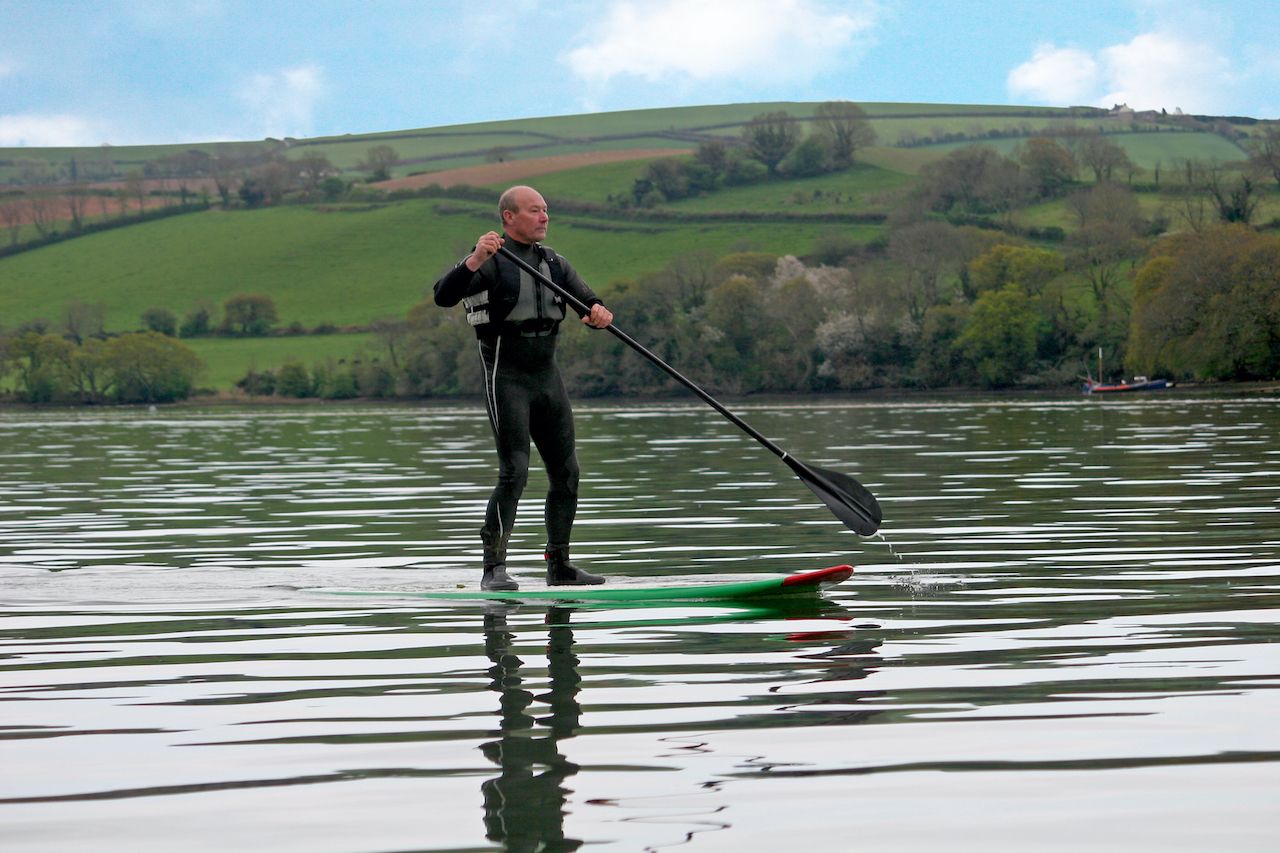
Photo: jennyt/Shutterstock
Because of the assistance given by the current, river swimming is many swimmers’ favorite — but the constant movement also means that waters stay colder. The River Dart is narrow and is here completely flanked by a thick curtain of deciduous trees. The crowns of the shorter ones, and the long branches of weeping willows, brush the water surface.
When the water level is high, swim by the narrow Staverton Bridge starting from its east side. It’s easy to walk in because of the rounded pebbles and rocks that carpet the floor. Swim in the morning to avoid having the sun in your eyes. Enjoy the view of the 1413 stone bridge, its dark stones framed by the round tree crowns on both sides. Swim underneath the bridge, as on the other side the river slightly widens, split by a small island completely covered by trees and shrubs. As you approach and swim around the small island, you’ll notice the greenery on it looks like it pops out directly from the river — a floating yet motionless green barge. It’s difficult to find a really deep spot, giving comfort to people who like to see the bottom. The water is usually fairly clear too, with the typical tannins’ brownish tinge from the trees.
River Trent, Anchor Church, Ingleby, Derbyshire

Photo: Simon Annable/Shutterstock
Walk half a mile from the hamlet to the river. The well-kept footpath ends by the abandoned Anchor Church, which is actually a collection of natural sandstone caves that were inhabited for centuries by monks and ascetics known as anchorites. The landscape is mostly grassy fields and crops; the uniform rapeseed’s yellow color is a common sight in spring. The riverbank is firm and grass-covered, so it’s an easy step in. The river is narrower and shallower, so the water is calm. While on your back lulled by the gentle current, enjoy the almost uninterrupted view of the sky as the countryside is flat, and there are few trees. This stretch in the river’s length is possibly the most desolated, and wind is rare too, making the place very quiet.
Additional precautions and safety information
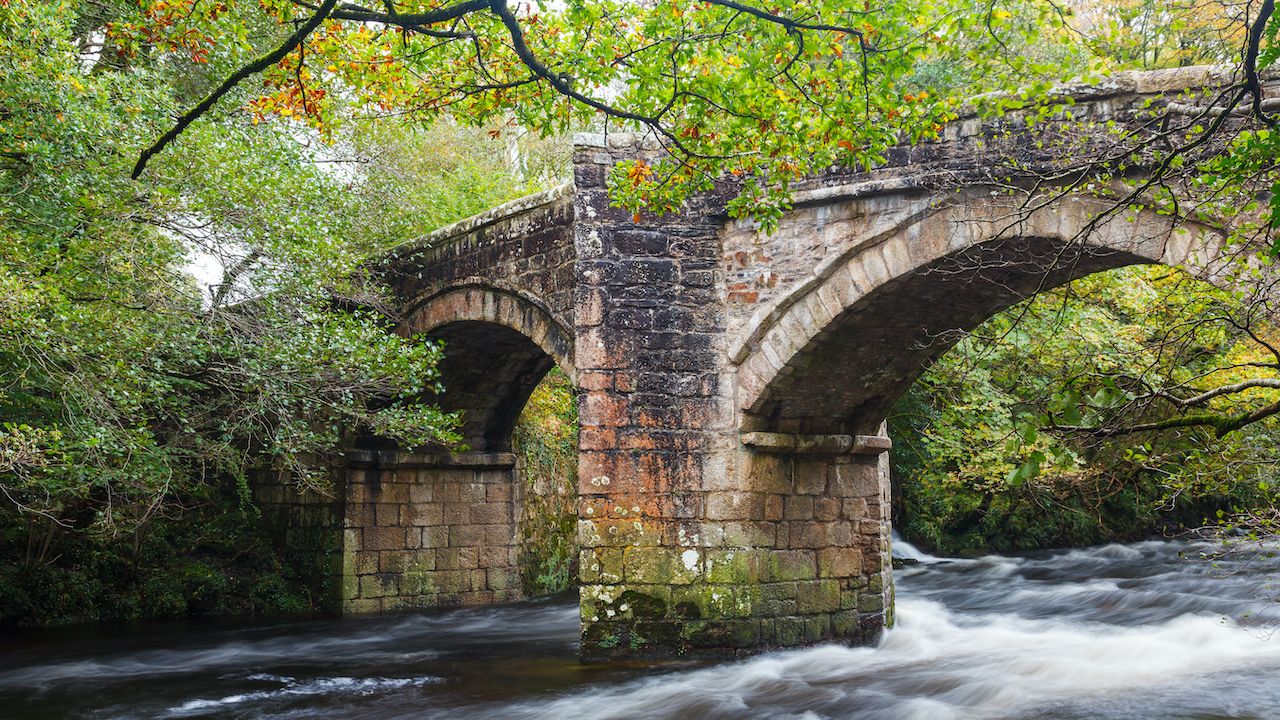
Photo: ian woolcock/Shutterstock
Hypothermia timeframes are actually predicted fairly accurately, so know the water temperature and the most time you should stay in. If you ever start shivering uncontrollably, get immediately out and warm up as that’s the first stage of hypothermia. Just as dangerous is the potential of cold-water shock, since the abrupt immersion in water colder than 59°F/15°C might cause gasping, hyperventilation, panic, and vertigo. Don’t just jump in.
Knowing the water conditions is essential, including being aware of the area and the tides, especially at sea. (Tide variations can be huge in England.) Rip currents and rip tides, both localized water moving directly away from shore and difficult to identify, are similar but differ in parameters. The first ones are more unpredictable; the second ones are more powerful. Both are dangerous. Rivers and lakes can have quickly changing water currents too. Anywhere there is water current and a shore, there is an undertow. This is a water movement opposite the waves’ direction. It’s not localized; it’s a universal response in any large body of water. It’s basically the water going back out. Pretty sneaky, it can take your feet under you or even just hurt your feet when it moves pebbles and rocks on them.